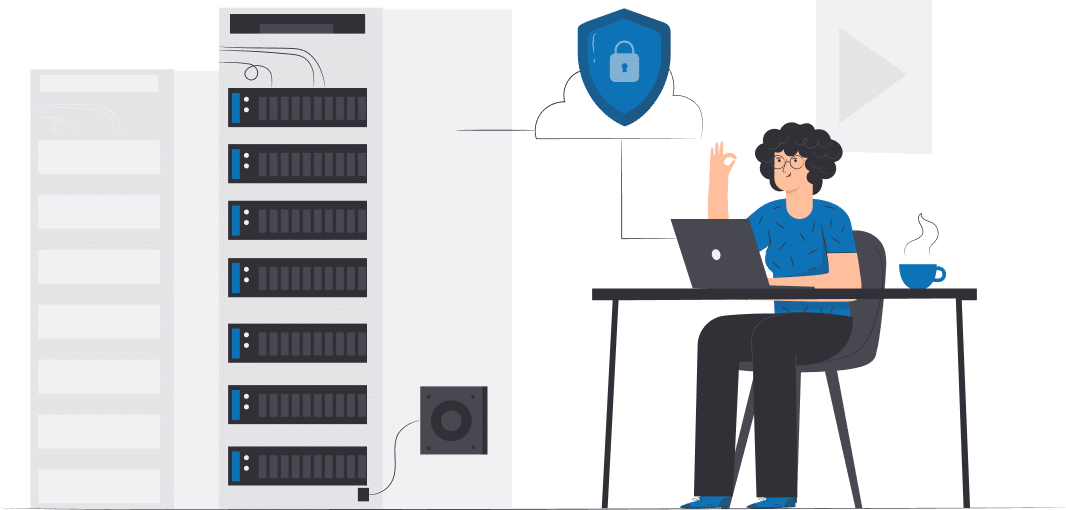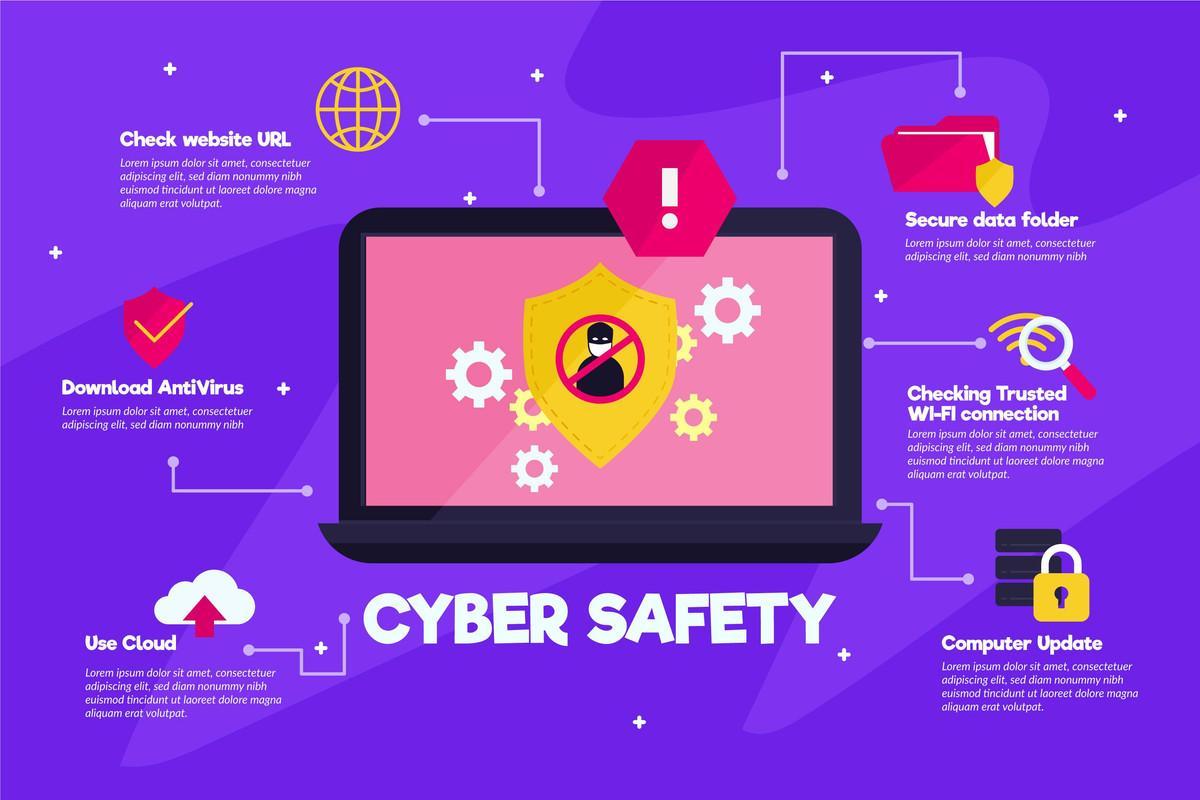Cyber monitoring is a process used to continuously observe an IT system to find or detect cyber threats, data breaches, and other potential system vulnerabilities. Unlike other cybersecurity-related services, cybersecurity monitoring is a proactive approach. Investing in this helps your IT team evaluate cyber events to find those that could pose risks or threats to your systems or data.
In 2022, it’s estimated that a minimum of 30,000 websites will be hacked each day around the world. Also, there are over 300,000 new malware programs created each day. Each year, cybercrime increases, which puts your data and infrastructure at more risk than ever before.
Now is the time to invest in services and solutions that will help you protect your business, data, and infrastructure. This is essential to maintain security for your organization and your customers, partners, and employees. Integrating ongoing cybersecurity monitoring into your company’s digital practices makes it possible to monitor for security misconfigurations, data breaches, and cyber threats in real-time.
Learn more about cyber monitoring, what it is, and why it is important here. You can also learn how to add cyber monitoring to your current IT systems.
How Cybersecurity Monitoring Works to Protect Your Business and Data
With cybersecurity monitoring, you gain real-time visibility of any suspicious behavior or unauthorized changes to your system or network. With this information, your IT team will be several steps in front of potential security threats and all types of potential data breaches.
When you invest in cyber monitoring, any foreign data will be confirmed and monitored using the security protocols you have in place. Data is then stored at a local data center or in a cloud database. As more data is collected and evaluated, all suspicious behaviors will be defined, which trigger alerts. Once alerts are created, they are sent to your IT team so they can take the proper security measures.
To better understand cyber monitoring and how it works, you should learn more about the two types of cyber monitoring:
- Endpoint monitoring
- Network monitoring
Endpoint Monitoring
Endpoint monitoring involves tracking all the devices connected to the network. The goal is to protect the network from the devices’ potential risks. All desktop computers, Internet of Things devices, desktop computers, tablets, laptops, and cellphones connected to your business network are endpoints and therefore monitored with this type of cyber monitoring service.
When endpoint behaviors are continuously monitored and analyzed for all connected devices, your IT team can find threats before they create serious problems for your business.
Network Monitoring
With network monitoring, all network activities are tracked and analyzed to find and respond to performance issues that may indicate an intrusion or leave your network vulnerable and susceptible to an attack.
Additionally, network monitoring can find components experiencing outages, crashing, overloaded, slow, or experiencing other technical failures that can make your network susceptible to an attack. Also, it will identify overloaded computers, servers, and other devices that could be a symptom of an attack or breach.
When you implement diagnostic appliances, applications, and tools into your network monitoring services, it is possible to analyze the security logs from these different components. If the software finds a performance threat or issue, it will send an alert to your IT department via email, text, or another method. Thanks to early detection, it’s possible for your IT team to respond quickly and mitigate the issue.
Why Is Cybersecurity Monitoring So Important?
Understanding what cyber monitoring is and how it works is important; however, as a savvy business owner, understanding what it can do for your organization is a must. After all, you may have to explain its importance to your stakeholders.
Reasons you should make cyber monitoring a top priority for your business, regardless of its size or what industry it operates in, include:
Find and Respond to Potential Threats Sooner
MTTD or Mean Time to Detect and MTTR or Mean Time to Respond are two of the main metrics cybersecurity teams use to determine their success when handling a digital crisis. The Mean Time to Detect refers to the average amount of time it takes your team to find potential security breaches or threats.
After your IT team finds an event and determines it is a threat, an alert is created. This is when the Mean Time to Respond starts. The MTTR refers to the average amount of time it takes your team to respond to an attack or threat.
If a cyberattack occurs, you should treat it like a health crisis. It requires fast detection and response times to mitigate the possible damage. If you have not invested in cyber monitoring services, attempting to reduce MTTD and MTTR times can be extremely challenging (if not impossible).
Statistics show that 52.6% of responding organizations have MTTD times of 24 hours or less, and 81.4% have MTTD times of 30 days or less. Once an event, incident, or issue is found, 67% of reporting organizations have an average MTTR time of under 24 hours, growing to 95.8% when MTTR is measured at under 30 days.
The longer a hacker, criminal, or another nefarious individual has access to your network, the more problems they can cause. It takes just hours (sometimes even minutes) for modern hackers to infiltrate your network. If you let these security threats linger in your infrastructure and environment for long periods of time, it can cause network setting changes, loss of important information or data, data breaches, and other problems. While some of these issues are temporary, others can be permanent.
Cases of Cybercrimes Are Growing
Cybercrimes are increasing in sophistication and number. Because of this, organizations of all types face increased risks that require proactive and ongoing cybersecurity measures. One of these is cybersecurity monitoring.
In 2021, cybercrime cost the United States $6.9 billion. This represented a significant increase from 2020 when the cost was just $4.2 billion; this upward trend is expected to continue.
Governance, Risk, and Compliance
Today, countries worldwide are taking steps that require businesses operating within them to take steps to monitor and protect the information and data systems they have. Businesses and organizations are held accountable if issues arise if they fail to do this. In the United States, some states have introduced more laws like this recently to help address the growing concern of data security and cybercrime.
One example is data disposal laws. Most states have enacted these already. There are at least 25 states that regulate data security throughout the private sector, which doubles the number of states with these laws in 2016. Because of this, GRC (governance, risk, and compliance) are growing in scope across several industries.
More organizations also want to digitize information systems through cloud computing and advanced AI (artificial intelligence) technology. These help to improve their data and cybersecurity privacy, which ensures they can meet the stringent GRC standards. It’s important to remember that cyber monitoring is crucial to reducing risk and ensuring general compliance is maintained.
Ability to Know and Track All Cyber Enemies
Investing in cyber monitoring allows you to detect and respond to potential threats faster. However, you can also learn from them, which will help improve overall security.
Ongoing monitoring will also help you track everything that occurs within your network. This gives you the tools and time to analyze, record, and respond to any potential threat. Proper cyber monitoring will also give you insight into who attacks the network and how they do it. With this information, you can prepare your network systems against any potential future attempts.
Your IT team will also learn about the potential threats. This includes their type, classification, operating system, ownership, and what devices are bringing them into the network. With innovative monitoring software, your organization will have the analytics and reports for these devices and any threat they pose. This ensures you can monitor them as needed and prevent the possibility of future attacks or issues.
Smaller Organizations Need Cyber Monitoring, Too
Proper cyber monitoring is needed for all organizations, not just large corporations. In fact, it’s now considered a high-priority IT service for smaller organizations and businesses that haven’t invested much into cybersecurity. However, you may wonder what has caused cybersecurity to become such a big problem for small businesses.
It’s estimated that 61% of smaller businesses experienced some type of cyberattack in the past year. Additionally, small businesses are the target of about 43% of all data breaches. The attacks against small businesses are increasing and becoming extremely common. Unfortunately, many small businesses don’t have the resources needed to recover. However, with cybersecurity monitoring, issues can be found and eliminated before creating any costs or other issues.
Invest in Cybersecurity Monitoring for Your Business
It doesn’t matter the size of your business or organization or what industry you operate in. Investing in cybersecurity monitoring can provide insights that can protect your organization. If you have questions, We can meet with you to discuss your needs and help you get the right solutions to keep your data, information, infrastructure, and business safe and secure. Send us a Message







